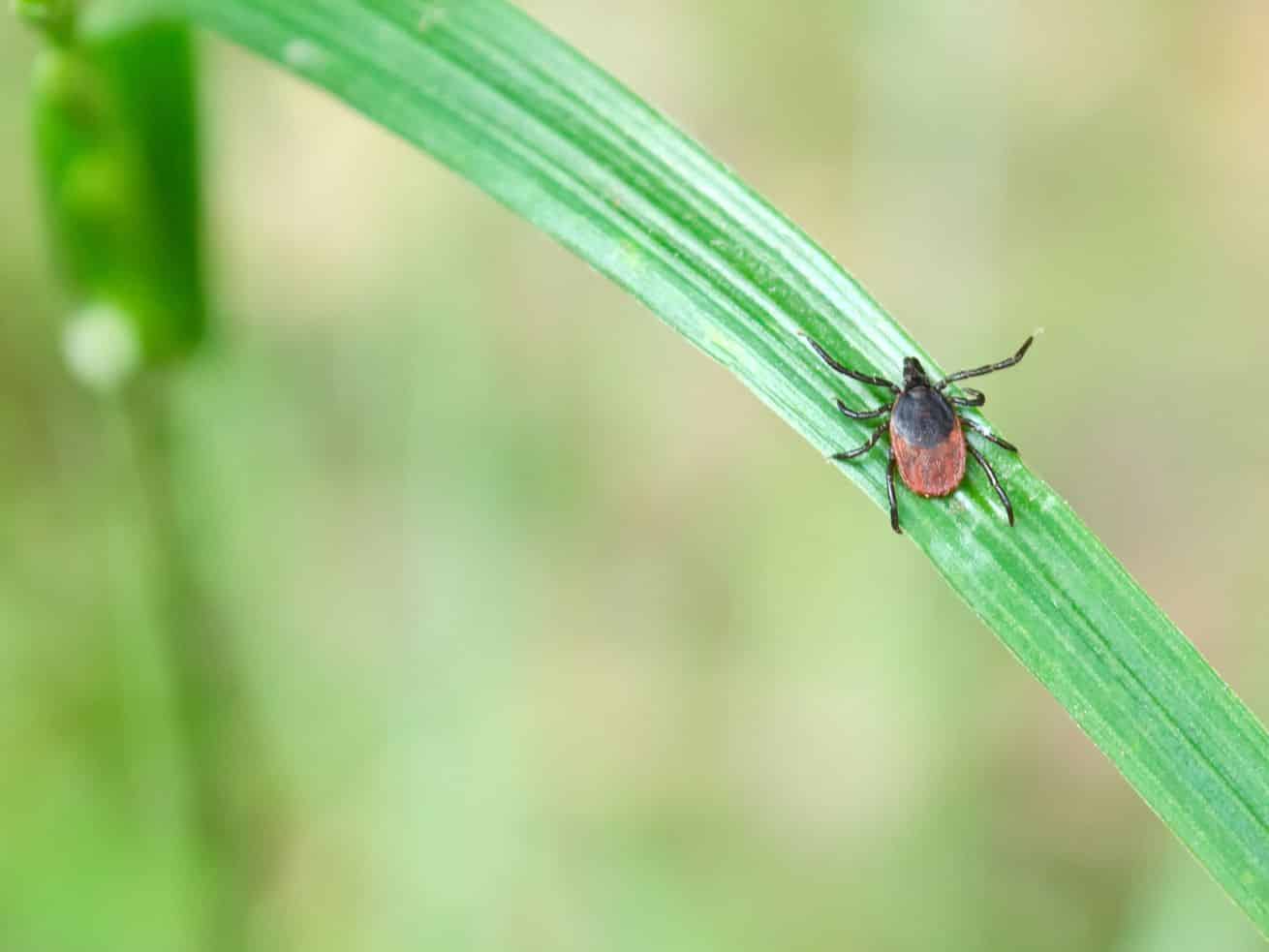Don’t panic. You can still enjoy a summer holiday outdoors.
This story is part of Down to Earth, a Vox reporting initiative on the science, politics, and economics of the biodiversity crisis.
It’s probably not the news you want to hear in the middle of a long-awaited summer: Dangerous ticks are spreading across the country.
Whether this season will be especially ticky depends on where you live or visit, experts say. But the range of several species that carry pathogens is expanding across North America. We’re now finding the parasitic arachnids in places we never have before.
Take the black-legged tick, which can transmit bacteria that causes Lyme disease. In the past two decades, the number of US counties with an established population has more than doubled. The lone star tick — a species implicated in potentially fatal allergic reactions to red meat, among other conditions — is also spreading fast.
There’s no single reason that explains why these blood-suckers are on the move. But one fascinating culprit is an increase in forest cover in the eastern US, which has helped facilitate the spread of white-tailed deer and other animals that ticks love to feed on. It’s a rare, counterintuitive example of how reforestation can carry unwanted consequences — or “ecosystem disservices,” as some researchers have put it.
More ticks means more tick-borne diseases, which have more than doubled since 2004. And these aren’t just concerns for backcountry hikers. In fact, your risk of encountering a tick may be higher while gardening or walking your pets — which, by the way, are at risk, too — relative to outdoor recreation, according to one large 2019 survey in the Northeast.
But don’t panic. You can still enjoy a summer outdoors if you dress appropriately, do frequent tick checks, and educate yourself about the areas where ticks pose the most danger.
/cdn.vox-cdn.com/uploads/chorus_asset/file/22706561/GettyImages_1223139332.jpg) Getty Images/iStockphoto
Getty Images/iStockphotoThe rise of dangerous ticks
There are hundreds of species of ticks worldwide and dozens in the US, but only some are known to transmit pathogens to humans. Typically, ticks aren’t considered reservoirs for those pathogens. Instead, they pick them up when feeding on infected hosts, such as white-footed mice.
Two kinds of ticks are especially worrisome in the US — the black-legged tick (Ixodes scapularis) and the lone star tick (Amblyomma americanum). Both carry harmful pathogens and appear to be creeping across the country.
Black-legged, or deer, ticks get the most attention from epidemiologists and ecologists. That’s because they carry two kinds of bacteria that cause Lyme disease — the most common vector-borne disease in the US and the cause of a number of unpleasant symptoms from fever to joint pain, some of which can last for months.
These ticks are now broadening their range from the eastern US in pretty much all directions, according to Dan Salkeld, a disease ecologist at Colorado State University. The CDC estimates that nearly half a million people now get Lyme disease in the US each year, and there’s been a steady rise in reported cases in the past three decades. (Tick surveillance gets better over time, which could explain some of the expansion.)
The expansion has epidemiologists worried. Tick-borne diseases already account for more than 75 percent of reported vector-borne diseases in the US, according to the Centers for Disease Control and Prevention. Making matters worse, the resources for tick surveillance and prevention are highly limited, compared with what we spend on, say, mosquito control.
/cdn.vox-cdn.com/uploads/chorus_asset/file/22704093/tick_expansion.gif) Centers for Disease Control and Prevention
Centers for Disease Control and PreventionThe red tiles in the above animation represent counties where researchers have documented the sprawl of black-legged tick populations in recent times, whereas the yellow shading shows areas where they could be found. Another species that carries Lyme disease, the western black-legged tick, which occupies much of the West Coast, is not shown here, but may also be spreading.
Meanwhile, the lone star tick, which is widely distributed across the eastern US, appears to be spreading north, Salkeld said. “They’re jumping states,” he said, mentioning that they’ve now been found in Colorado, “where they’re not supposed to be.”
There’s evidence to suggest that a bite from the lone star tick can in some people trigger Alpha-gal syndrome, a potentially fatal allergic reaction from consuming red meat. (Both black-legged and lone star ticks can transmit several other dangerous pathogens as well.)
/cdn.vox-cdn.com/uploads/chorus_asset/file/22705724/lgmap_lone_star_tick.jpeg) CDC
CDCStill other types of tick, like the Gulf Coast tick that’s found in the Southeast and part of Arizona, likewise appear to be moving north, as does the American dog tick, according to a study from 2018. Both of those species can transmit human pathogens. According to Rebecca Lee Smith, an associate professor of epidemiology at the University of Illinois, researchers have found populations of Gulf Coast ticks in Illinois — “farther north than anybody expected them.”
Though it presents less of a threat to humans, the longhorned tick, an invasive species first reported in 2017, is also spreading across the eastern US. The tick can effectively clone itself to reproduce and has been known to kill cattle by “exsanguination” — a grisly, slow-moving process in which hordes of ticks latch onto animals and suck so much of their blood that they die. Fortunately, it doesn’t appear that longhorned ticks can transmit Lyme disease to humans.
More deer often means more ticks
If you ask scientists why ticks are expanding, you tend to hear a lot of, “It depends.” Different species — and even the same species in different regions — appear to be spreading for different reasons.
In the Northeast, for example, black-legged ticks are likely spreading in part because of the increase in forest cover, said Rebecca Eisen, a research biologist at the Centers for Disease Control and Prevention. In the 18th and 19th centuries, settlers felled large swaths of forest to fuel their westward expansion and grow food, which, along with hunting, drove out white-tailed deer. In the late 19th century, forests started growing back, and the deer returned in huge numbers. Now, the black-legged tick is likely just “expanding in its previous range,” Eisen said.
/cdn.vox-cdn.com/uploads/chorus_asset/file/22706546/GettyImages_459016334.jpg) John McDonnell/The Washington Post/Getty Images
John McDonnell/The Washington Post/Getty ImagesThat reveals a broader trend: Areas with lots of deer tend to be areas with lots of ticks, as deer are the prey of choice for many species. “Ticks that have made the biggest moves over the last few decades are those that rely heavily on deer as a reproductive host,” said Thomas Mather, a professor and disease ecologist at the University of Rhode Island. That includes the lone star tick, which typically relies on blood from deer in all stages of its life, from larva to adult. And these arachnids can really go to town. One older study from Arkansas documented as many as 2,550 ticks on the ear of one deer.
“The deer is a large-bodied, highly abundant species that occurs in many different habitats, so for a parasite, it’s a great host,” said Jean Tsao, an associate professor and tick expert at Michigan State University.
Some research also suggests that forest fragmentation and the loss of biodiversity can benefit ticks — again, by increasing the number of host animals. Typically, when you start disturbing a natural habitat, “generalist” species like deer and mice tend to thrive. They can survive on a range of foods and have fewer predators, Tsao said. These animals are often the very ones that ticks like to feed on, Smith said.
Fragmentation also increases the amount of forest edge, where humans and wildlife are more likely to come into contact. (However, high fragmentation can also limit the ability of ticks or their hosts to spread from one patch of habitat to the next.)
/cdn.vox-cdn.com/uploads/chorus_asset/file/22706004/Screen_Shot_2021_07_08_at_11.50.17_AM.png) W. Tanner Porter et al./International Journal of Health Geographics
W. Tanner Porter et al./International Journal of Health GeographicsIs climate change also to blame? Yes and no.
Ticks may seem indestructible, but they’re actually sensitive to changes in moisture and temperature, and long, harsh winters can keep them at bay. That’s why researchers suspect that climate change could help some species spread — including the lone star.
“Further northward and westward expansion of these ticks can be expected as a result of ongoing climate change,” wrote authors of a 2019 study on lone star ticks, which modeled habitat suitability under various climate scenarios. White-footed mice, which are reservoirs for some pathogens, also appear to be moving north, other research shows.
/cdn.vox-cdn.com/uploads/chorus_asset/file/22705722/pone.0209082.g003.png) Ram K. Raghavan et al./PLOS ONE
Ram K. Raghavan et al./PLOS ONEFor other ticks, climate change is more of a mixed bag. Some studies, for example, link high temperatures to a lower risk of Lyme disease in parts of the country; ticks can die when they dry out. Other research, however, suggests climate change may facilitate the northern spread of black-legged ticks and Lyme disease. Shorter winters may also mean ticks are active for a longer period, giving them more opportunities to bite humans.
For now, much of this remains “guesswork,” Eisen said. “You could see some range contraction, but most of the models are suggesting expansion more than contraction.”
How to prevent a tick bite
Ticks would be a lot less threatening if we had an effective way to manage them. “Right now, there are very few tools to control ticks,” Tsao said.
Each method we do have — from poisons known as “arachnicides” to deer eradication — comes with its own drawbacks, researchers say. And funding for tick control isn’t always a priority. “Why is there such a disparity in the tools that we have to prevent tick-borne diseases relative to mosquito-borne diseases?” Eisen said.
/cdn.vox-cdn.com/uploads/chorus_asset/file/22705730/GettyImages_186480110.jpg) Bill Greene/The Boston Globe/Getty Images
Bill Greene/The Boston Globe/Getty ImagesThe good thing, Eisen says, is that tick-borne disease is preventable — you just have to take action yourself. Here’s what the CDC recommends:
- Use an insect repellent registered by the EPA
- Wear long pants, and treat your clothes with the insecticide permethrin. Bonus points if you tuck them into your socks.
- When you get home, throw your clothes in the dryer on high heat for 10 minutes.
- Do a tick check with help from a friend or loved one, and take a shower.
- Don’t forget to check pets, too! Dogs are highly susceptible to tick-borne diseases including Lyme disease. You should also be sure to use reliable tick-prevention medications. (Though rest assured that dogs can’t transmit Lyme disease to another pet or to you directly.)
If you do find a tick that’s dug into your skin, check out this CDC guide. Basically, you’ll want to pull it out with tweezers (don’t twist!) and clean the area with alcohol or soap and water. You can also snap a photo of it and upload the tick pic to TickSpotters, a tool that Mather developed. TickSpotters will then confirm the tick species and your risk of being infected, usually within 24 hours.
So, go forth and enjoy your summer — which will hopefully be tick-free.
Author: Benji Jones
Read More



